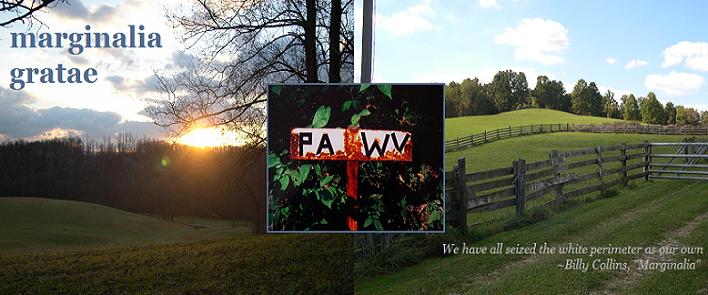A while ago, while enrolled in an upper-level (i.e. 900-level) economics in higher education course, one of my peers offered the following during discussion:
Can we all just stop pretending that athletics has anything at all to do with education?
While the majority of those in class nodded in approval, a few of us—maybe about a quarter of the class—looked as though we had been collectively slapped. I suspect the number of us who were taken aback by her sardonic remark was falsely inflated: many of those enrolled in the course worked in the Athletics Department and/or were working on an advanced degree in Athletic Administration.
Her comments, and the positive, vigorous nodding enacted by most in the class, is not at all uncommon in academe. Not long ago, over lunch, I sidestepped an argument with a friend’s husband about the benefits of strong athletics programs to the wider institution. I have fielded criticism by some colleagues and advisers for permitting my students to write about sports and sports-related topics. I have seen the polite response by some in my field who clearly question the relevance of my interest in language and culture related to athletics (
You wrote a paper about trash-talking? Oh, that’s . . . unique), the subtext of which is, “It may be interesting, but it’s idiosyncratic and not publishable.” And I have read and heard countless comments like the one following an article in today’s
Chronicle discussing
Texas’ proposed 10% Admission plan and its implications for the Texas football programs:
“Forget the impact on academics. I guess if you want to influence Texans you need to go after athletics. Nice…” (B. Smythe).
I have also been following this critique of values as played out in the media in recent weeks vis-à-vis the revelation that
USC’s football coach Pete Carroll’s salary is four times that of USC’s president, Steven Sample. This particular case, echoing the tone of B.Smythe’s comment, is held up as the emblem of our culture’s skewed priorities. While there may be some truth in such a critique—$4.4 million is an astounding yearly salary—Carroll’s deal is, in fact, a compensation
package. “USC Football” is a powerful brand, and Carroll is the guardian of the brand. To that end, Carroll’s salary is much less ridiculous, to my mind, than the exorbitant compensation offered Hollywood actors and actresses.
It seems to me that the bad vibes we scholars generate related to our athletic programs does a disservice to the complexity of the institution and of higher education as a multifaceted project. Too many of us in academe disparage athletics; we set up unhelpful dichotomies between athletics and education that are unhelpful at best—and are, at worst, damaging. It is understandable: it is difficult, especially in the humanities, to see ‘fat cat’ pockets of our campus thrive while we, in preparation for teaching our classes, jog room-to-room looking for chalk.
Still, I am cautious, even critical, of privileging curriculum as the only significant heuristic in Higher Education. With everything we understand about multiple intelligence, liberal education and its beneficial externalities, and the importance of cocurricular participation in learning, I am hesitant to turn away from the value of athletics, and I will defend athletics as steadfastly as I do the arts. As noted in the
Chronicle’s coverage of the
Texas admissions case
This year 81 percent of the freshmen at the flagship campus here are “top-10-percenters,” and next year the proportion is expected to rise to 86 percent. That trend, Austin officials say, gives them practically no flexibility to admit musicians, scientists, and athletes who don’t make it into the top tier for automatic admission.
The fact is that strong athletics programs are an instrumental part of institutional viability. At my behemoth BigTen institution, for example, I know that of all our athletics programs, only one turns a profit (football); one breaks even (men’s basketball), and—because as a non-profit enterprise all proceeds must be reinvested in our institutional programs—all other athletic programs, including those required and protected by Title IX, are funded by the capital generated through concessions, television deals, Bowl appearances, licensing, and the like. Athletics, in this way, is a self-sustaining industry within the broader context of the academy. Situated thus, athletics provides opportunities for student access and name recognition that transcends esoteric academic communities (i.e. “the ivory tower”); in short, strong athletics programs blur the boundaries between the academy and the non-academic community and open the academy to a much broader constituency.
At smaller, non-profit institutions, the benefits of strong athletics programs and the closely-coupled relationship between athletics and academics are more conspicuous. Adrian College in Michigan, for example, expanded their athletics programs in the face of markedly declining enrollments. In just a short amount of time, their risk paid off: as reported in the
19 September 2008 Chronicle The additional revenue from higher enrollment has enabled Adrian to make significant improvements in academic buildings and in faculty hiring. As its operating budget has grown to $43-million from $23-million since 2005, the college has modernized two academic buildings, expanded the campus dining hall, and hired 16 tenure-track faculty members.
There is so much more to say, of course, but I am probably already pushing the boundaries of this medium with such a long post. So I'll close with this: as an advocate for athletics in higher ed, I am also cognizant of the fact that balance here is key. Still, my fellow doctoral student’s remark resonates with me, and I would argue that athletics—for the role it plays--is as important to higher education as the academic programs, people, and facilities that define it.







